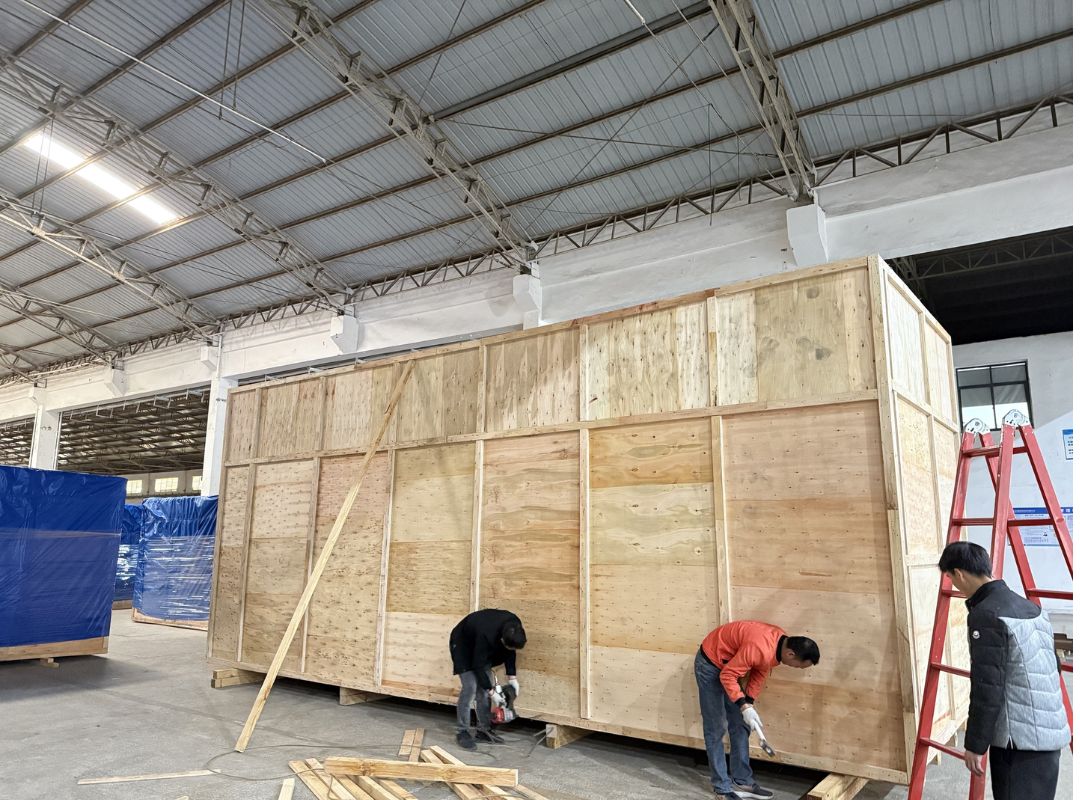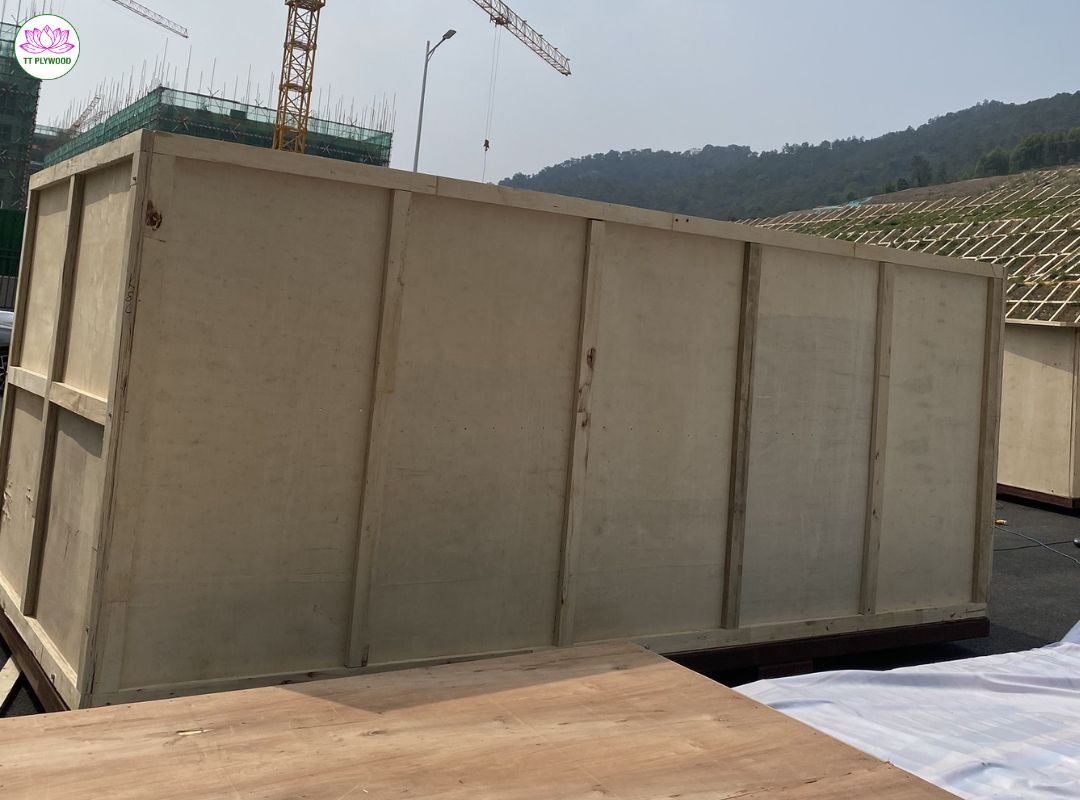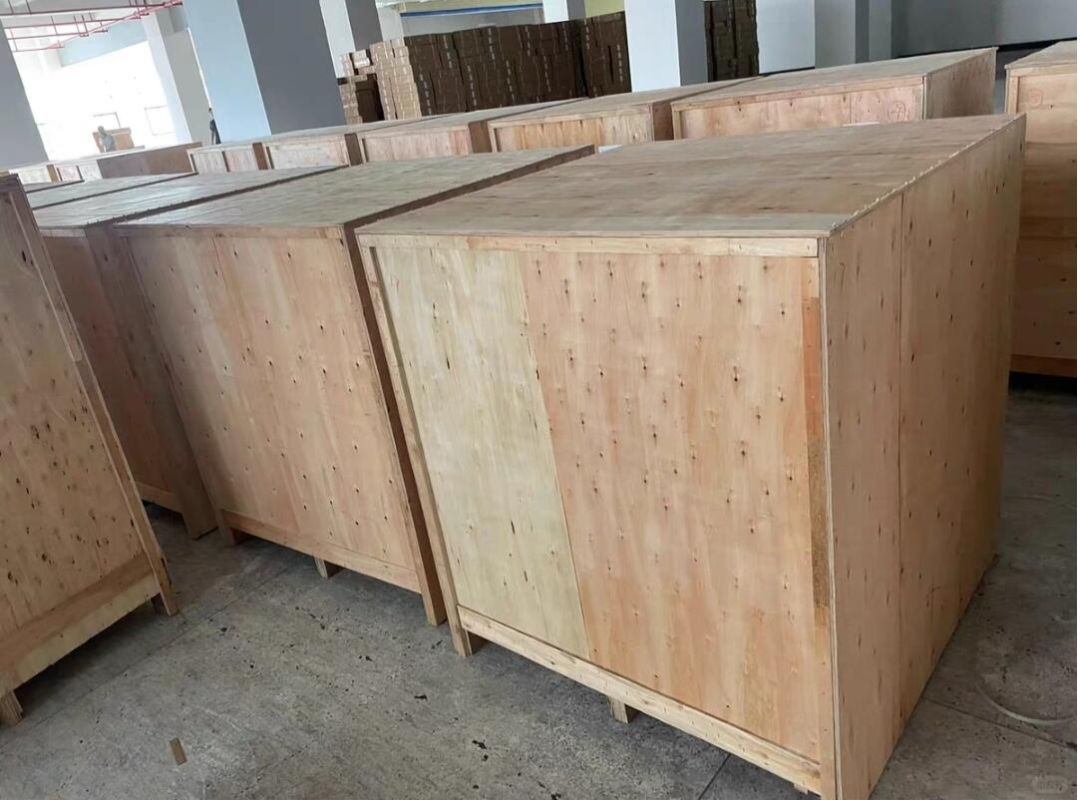-
-
-
Total payment:
-

Application of Plywood Packaging in Import-Export Industry
Posted by Thanh Uyên at 12/11/2024

In international trade, where the safety and regulatory compliance of goods are crucial, plywood packaging stands out as a key logistics solution. Across the United States and European Union, plywood crates and pallets serve as reliable and cost-effective materials that ensure cargo arrives intact, meets regulatory requirements, and supports sustainability goals. This article explores how plywood packaging is used in global logistics, especially in meeting ISPM 15 standards, reducing freight damage, and supporting high-volume export businesses.
Strength and Versatility in Packaging
Plywood packaging owes its popularity to its structural strength. Unlike corrugated cardboard or thin plastics, plywood consists of layered wood veneers bonded under heat and pressure. This layered construction improves resistance to impact, weight, and bending during transit. Exporters dealing with heavy machinery, electronics, furniture, or fragile items find plywood crates particularly useful because they combine rigidity with a degree of flexibility that helps absorb shock.
In addition to its strength, plywood packaging is highly adaptable. It can be custom-manufactured to fit a wide variety of product shapes and sizes. For example, shipping an industrial motor may require a reinforced base and side bracing, while exporting flat-screen monitors might require lightweight but secure plywood boxes with foam inserts. With customization, businesses can optimize shipping container space and avoid paying for unnecessary air volume—ultimately lowering freight costs.
ISPM 15 Compliance and Export Regulations
Global trade regulations require wood packaging to comply with phytosanitary standards that prevent the spread of invasive pests. The most widely adopted standard is ISPM 15, issued by the International Plant Protection Convention (IPPC). Plywood products made entirely from engineered wood are often exempt from ISPM 15 if they do not contain solid wood components. However, many exporters still choose to mark their crates with official IPPC symbols to eliminate confusion and ensure a smoother customs process.
ISPM 15 requires that packaging wood be either heat-treated (HT) or fumigated with methyl bromide (MB). The treatment must be clearly marked with a stamp showing the country code, treatment type, and certification number. Although plywood is generally considered low-risk, crates that include thicker wooden elements or non-plywood reinforcements must comply with ISPM 15 fully.
In the EU, enforcement is strict. Importers in Germany, the Netherlands, and Scandinavian countries regularly reject non-compliant packaging. In the U.S., Customs and Border Protection (CBP) requires that all wood packaging be clearly stamped and traceable to a certified producer.
Export Applications in the US and EU

The demand for plywood packaging is especially strong in the United States and the European Union. In the U.S., plywood crates are commonly used for exporting medical devices, industrial parts, military equipment, and electronic goods. These crates must withstand long-distance transportation, handling in multiple warehouses, and possible climate fluctuations during ocean transit.
European businesses rely on plywood packaging for both imports and exports. The EU’s push for sustainable packaging has increased the appeal of plywood crates, especially when sourced from Forest Stewardship Council (FSC) certified forests. Reusability and ease of recycling also make plywood packaging attractive in a region where environmental regulations are becoming increasingly strict.
A recent industry report noted that the U.S. imported more than 70,000 lots of packaging plywood in a 12-month period, representing 45% of global shipments. This volume reflects growing trust in plywood solutions for high-volume trade sectors.
Common Forms of Plywood Export Packaging
| Packaging Type | Description | Typical Use Case |
|---|---|---|
| Plywood Export Crates | Rigid containers with reinforced corners | Machinery, electronics, automotive parts |
| Plywood Pallets | Lightweight, stackable bases | Air cargo, warehouse handling |
| Foldable Plywood Boxes | Knock-down for return shipment | Furniture, seasonal promotional goods |
| Marine-Grade Plywood | Waterproof and mold-resistant construction | Long-distance ocean freight |
Each packaging type can be customized based on cargo size, value, weight, and handling requirements. For ocean freight, marine plywood resists moisture and fungus, while for air freight, lighter plywood grades help reduce overall weight without compromising safety.
Environmental and Economic Considerations
Plywood packaging contributes to sustainability goals due to its reusability and recyclable nature. Compared to plastic, plywood decomposes naturally and has a lower environmental footprint when properly sourced. Exporters who select FSC or PEFC-certified plywood can meet green procurement standards in eco-conscious markets like Germany and Scandinavia.
Cost savings are also substantial. Businesses using plywood export crates have reported fewer damaged goods, lower insurance claims, and better loading efficiency in containers. Crates designed for reuse or collapsibility reduce costs in reverse logistics, especially for companies that operate return programs or ship regularly to the same partners.
A case study from a European electronics manufacturer showed that switching to custom plywood packaging cut breakage by over 60% and allowed them to fit 25% more units in each container. Another furniture exporter in Vietnam reduced packaging expenses by 30% by replacing corrugated boxes with foldable plywood crates.
Best Practices for Exporters

To fully benefit from plywood packaging, exporters should work with certified packaging suppliers who understand ISPM 15 regulations. Selecting the right plywood grade—marine, commercial, or industrial—ensures the packaging performs under the expected environmental and mechanical stress.
Crate design should also consider the shape and fragility of the contents. Foam inserts, braced walls, and reinforced bases improve load stability. Businesses are encouraged to stamp crates with the appropriate treatment code and traceable batch numbers to avoid customs delays.
Choosing sustainable suppliers and recyclable materials not only helps meet regulatory expectations but also enhances brand reputation among environmentally conscious buyers.
Conclusion
Plywood packaging has become an indispensable component of the global import-export industry. With its unmatched durability, compliance with international regulations like ISPM 15, cost-efficiency, and sustainability advantages, it serves as the ideal choice for businesses shipping goods across borders. From machinery to electronics and from Europe to North America, plywood crates and pallets continue to support reliable, safe, and eco-friendly global trade.
✅ References
-
FAO/IPPC – ISPM 15 Guidelines: https://www.ippc.int/en/publications/640/
-
USDA Forest Products Laboratory – Plywood Strength Data: https://www.fpl.fs.fed.us/
-
Volza – US Import Statistics on Packaging Plywood: https://www.volza.com/
-
Jordbruksverket (Swedish Agriculture Board) – EU Import Regulation: https://jordbruksverket.se
-
Packaging Europe – Sustainable Packaging Case Studies: https://www.packagingeurope.com
-
Plywood Products – Types of Export Plywood: https://www.plywoodproducts.com
1 comment











Vera Nhi Reply
15/03/2025I have exported Plywood from Vietnam to another country. Ensure about quality Via me at veranhi@plywood59.com for more details. tks